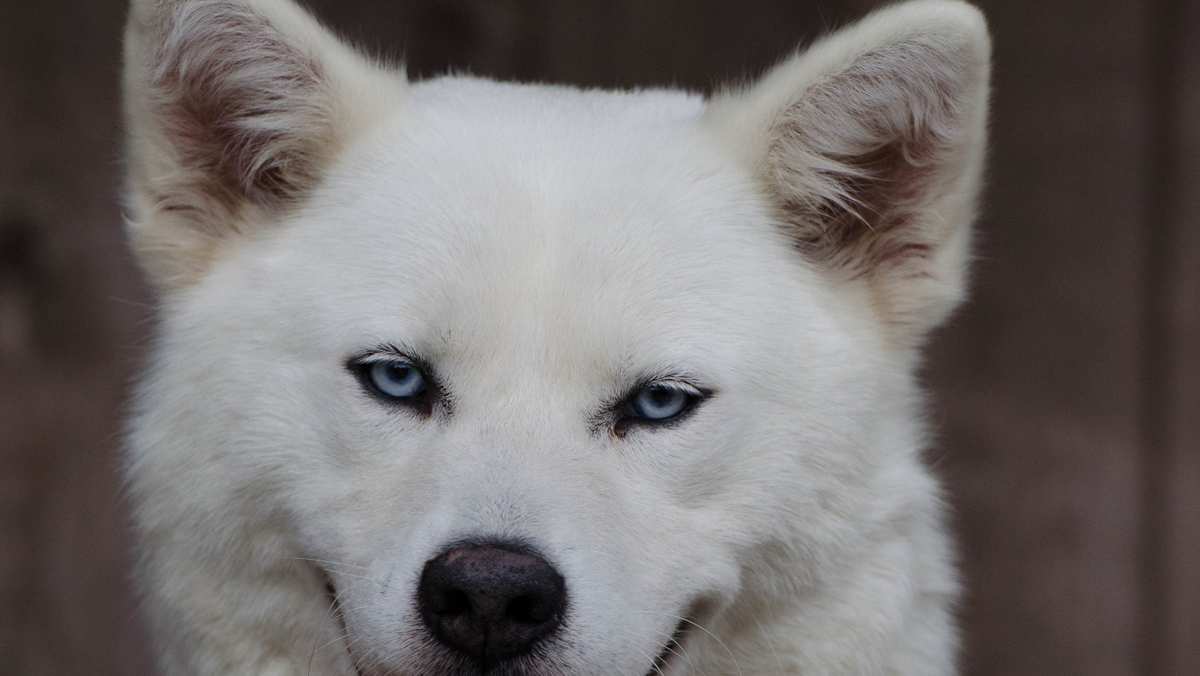Huskita Breed Details
Below are the details and specs of the Huskita.

The huskita is a hybrid dog breed which is bred by crossing a Siberian husky with an Akita Inu. As a hybrid dog breed, huskitas will inherit traits from both parent breeds, however not all huskitas will inherit the same traits. Some huskitas will display more Akita traits while others may have more Siberian husky traits. Because of this it is recommended to thoroughly research both the Akita and the Siberian husky before adopting a huskita so you will know what behavioral characteristics to expect.
Below are the details and specs of the Huskita.
Both the husky and the Akita Inu are large powerful dog breeds. The two breeds have similar sizes and builds which will likely be inherited by their offspring. As a result, an Akita Husky cross will be a large and very strong dog breed.
The huskita will be an independent dog. The husky, originally bred for its strength and sled pulling, is a very strong loyal dog. The Akita is also known for its strength and were originally bred for hunting large animals. The strength from both parent breeds will be visible in huskita. They make great watch dogs because of their independence and loyalty to family members. Because of the huskita's strong will, independence, and physical strength, it is not recommended for first-time owners.
The husky has a long double coat made for the arctic climate. The akita can have two different types. The standard length and a more rare long fur. The akita with longer fur are said to be more docile. The huskita takes the traits from both with a dense rough coat which repels water. Though their coats are thick, huskitas shed very little and require average grooming.
Since the majority of hybrid dogs are fairly new, there is very little about their history. Huskitas were likely first bred intentionally when designer dogs started gaining popularity in the 1980's.
The Huskita's appearance will vary from dog to dog. Since each dog will inherit different traits from each parent some huskitas may resemble a husky, others an akita, and some a subtle mix of the two breeds.
Regardless of the inherited genetics, huskitas should all display the traits common between the Akita and the Siberian Husky. So owners should expect their huskita to have a waterproof double coat with straight fur.
You can expect the Huskita's temperament to be similar to either the Akita or the Siberian Husky's temperament. However, since each Huskita will inherit different traits from their parents it is difficult to predict which behavioral traits the dog will display. This is why it is important to fully research both parent breeds before adopting a Huskita.
Even though you won't know for sure which behavioral traits the huskita will display, it is safe to say that Huskita's will have behavioral characteristics common in both the Husky and Akita. With this being said, you can expect the huskita to be a handful to handle. They are not recommended for first time dog owners as the huskita will need an owner that displays firm leadership qualities. If the Huskita doesn't consider you the "pack leader" the dog will assume this role which can make them stubborn and somewhat overwhelming.
The Huskita will have an enormous amount of energy and should not be expected to live a lazy sedentary lifestyle. Many dogs with high energy will develop destructive habits if not well exercised including digging holes, escaping, barking, etc.
Training a Huskita can be difficult for owners which are unfamiliar with dog breeds. If you are a new owner and want to adopt an Akita Husky mix, it would be beneficial to sign up for dog training classes.
The huskita will likely be a high maintenance dog. Their exercise and grooming requirements will require daily attention which trumps the maintenance levels of many other dog breeds.
You should expect the huskita to be a heavy shedder. Shedding should be less in colder climates, but 2-3 times per year the huskita will shed heavily which will require daily brushing and vacuuming to keep their hair off clothes and furniture.
The good news is that huskitas will likely inherit the self-grooming habits of their parent breeds. They will take the time to clean themselves similar to the way cats do. They only need to be bathed once every three months as bathing them too frequently can strip their fur of natural protective oils.
Since both parent breeds are very active dogs you can expect the Huskita to require high amounts of exercise. A simple walk or quick jog will not suffice. These dogs will do best with an active family as a sedentary lifestyle will cause the dog to develop their own ways of burning off energy such as digging, barking, chewing, etc.
The huskita will want to be with their family as much as possible, however, it is difficult to determine if a huskita will prefer indoors to outdoors. Akitas want to guard their family so they will find a place where they can perform this job best. Siberian Huskies can sometimes have a roaming instinct which makes them prefer being outside rather than inside. Since the huskita can inherit either one of these traits (or a mix of both), it is difficult to say if they would prefer being an inside or outside dog.
As a hybrid dog, the huskita will have more genetic diversity than purebreds making them a relatively healthy dog. However, this doesn't guarantee the huskita will not have any health problems. Health issues common in both the Siberian Husky and the Akita can also occur in the Huskita.
Below are common huskita health issues.
Below are potential health concerns associated with Huskitas.